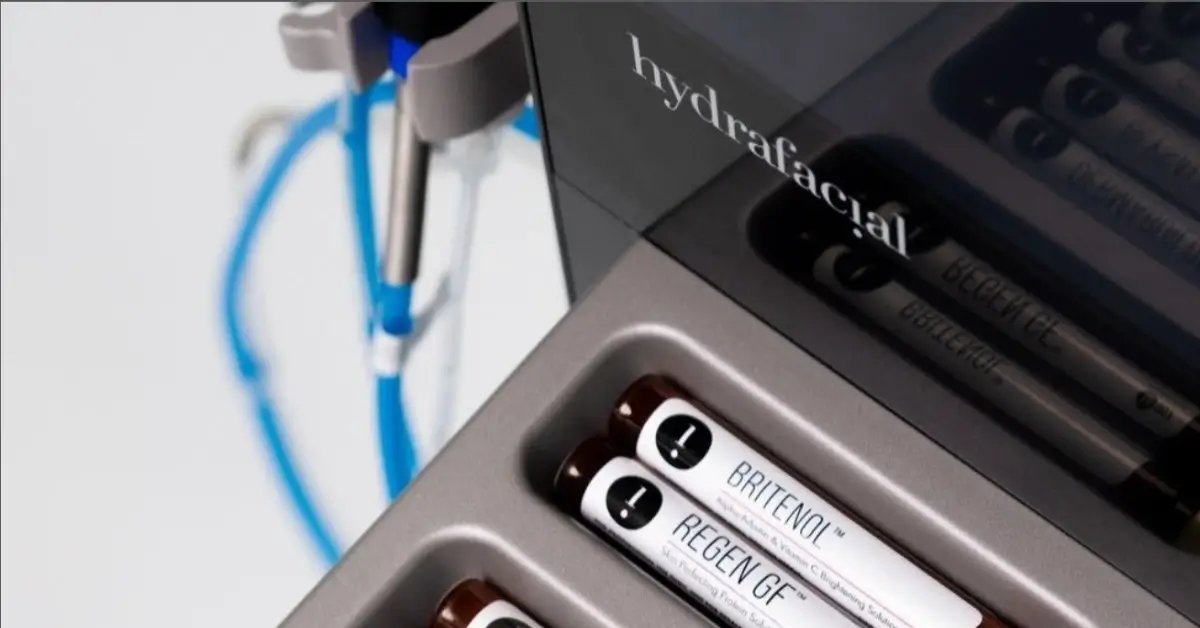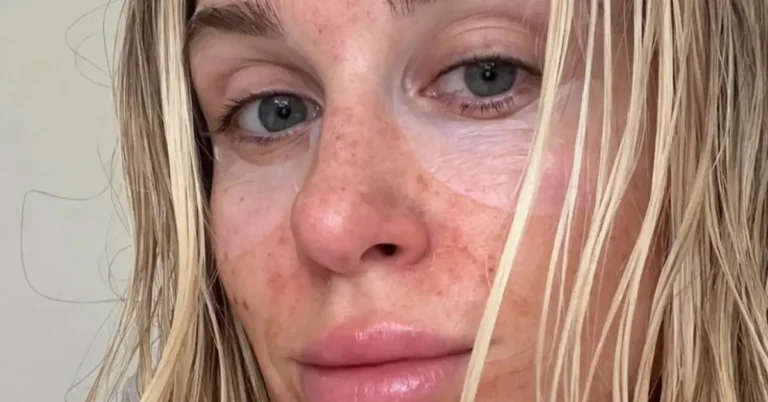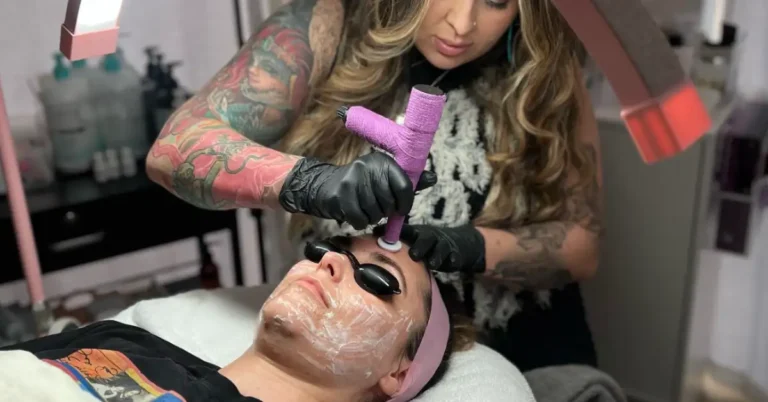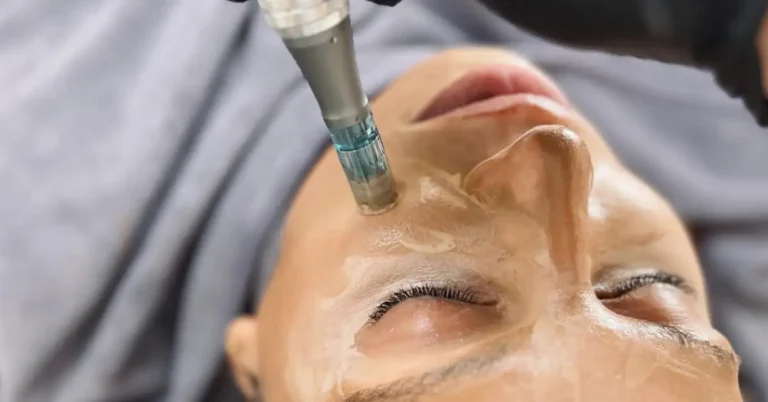Fed up with the relentless fight against acne and endless treatments that appear ineffective? I totally understand, having struggled with skin problems myself for a long period. Nevertheless, I’ve discovered an innovative solution that I’m eager to share with you: Coming from someone who has also experienced the frustration of trying numerous remedies with no real results, I deeply relate to the struggle.
That’s why I was excited to try the HydraFacial, a popular skin treatment that promises to leave you with glowing, radiant skin. However, like any treatment, there are potential side effects to be aware of. In this comprehensive article, I’ll take you on a journey through my personal experience with the HydraFacial.
I’ll shed light on not only the incredible benefits, but also the potential side effects, ensuring you have all the information you need to make an informed decision about your skincare journey. Say goodbye to acne frustrations and hello to glowing, revitalized skin as we explore the world of HydraFacial together, diving deep into its wonders and potential considerations.
Table of Contents
HydraFacial Side Effects
One of the most common HydraFacial Side Effects is redness and irritation. This is because the treatment involves exfoliating the skin and extracting impurities, which can leave your skin feeling sensitive and raw. While this side effect is usually temporary and should subside within a few hours, it’s important to be aware of it before scheduling your appointment.
Another potential side effect of a HydraFacial is breakouts. This can happen if your skin is particularly sensitive or if the treatment causes your pores to become clogged. While this is a less common side effect, it’s still important to be aware of it if you’re prone to breakouts or have sensitive skin. If you do experience breakouts after a HydraFacial, it’s important to speak with your esthetician or dermatologist to determine the best course of action.
What is HydraFacial?



As someone who has struggled with acne and other skin issues, I am always on the lookout for new and effective treatments. That’s how I discovered HydraFacial, a patented skin treatment available in medical spas and dermatology offices.
HydraFacial is a non-invasive, multistep treatment that combines cleansing, exfoliation, extraction, hydration, and antioxidant protection. It uses a special device that uses suction and a serum delivery system to remove dead skin cells, unclog pores, and hydrate the skin. The treatment takes about 30 minutes, and there is no downtime, so you can return to your daily activities right away.
One of the things I love about HydraFacial is that it can be customized to meet your specific skin concerns. Whether you’re dealing with acne, fine lines, hyperpigmentation, or dullness, a skilled aesthetician can tailor the treatment to address your unique needs.
Another benefit of HydraFacial is that it is suitable for all skin types, including sensitive skin. The treatment is gentle and non-irritating, so you can enjoy a relaxing spa experience without worrying about adverse reactions.
Understanding Hydrafacial Process
I recently had a Hydrafacial treatment and wanted to share my experience with you. Hydrafacial is a patented skin treatment that is available in medical spas and dermatology offices. It is a non-invasive procedure that uses a handheld device to cleanse, extract, and hydrate your skin. The treatment is suitable for all skin types and can address a variety of skin concerns.
The Hydrafacial process involves three steps: cleansing, extracting, and hydrating. During the cleansing step, the provider uses a gentle cleanser to remove any dirt, oil, and makeup from your skin. This step prepares your skin for the rest of the treatment.
Next, the provider uses a handheld device to extract impurities from your skin. The device uses a vacuum-like suction to remove dead skin cells, blackheads, and other debris from your pores. This step can be a little uncomfortable, but it is not painful.
Finally, the provider applies a hydrating serum to your skin. The serum contains antioxidants, peptides, and hyaluronic acid to nourish and hydrate your skin. This step leaves your skin feeling soft, smooth, and refreshed.
Common Side Effects of Hydrafacial



Hydrafacial is a popular skin treatment that promises to leave your skin looking brighter, unclogged, and refreshed. However, like any cosmetic procedure, it comes with the risk of side effects. In this section, I will discuss some of the most common side effects of Hydrafacial.
During my personal experience with Hydrafacial, I noticed some redness on my face after the treatment. This is a common side effect of Hydrafacial, and it usually goes away within a few hours. The redness is caused by the suction and exfoliation of the skin during the treatment. If you have sensitive skin, you may experience more redness than others.
Another common side effect of Hydrafacial is dryness. After the treatment, your skin may feel dry and tight. This is because the treatment removes dead skin cells and oils from your skin. To combat this, it is recommended to moisturize your skin after the treatment and drink plenty of water to keep your skin hydrated.
In rare cases, some people may experience allergic reactions to the serums used during the treatment. If you have a history of allergies, it is important to inform your esthetician before the treatment. They can recommend alternative serums that are less likely to cause an allergic reaction.
Pro Tip: To minimize the risk of side effects, it is important to choose a reputable spa or clinic that employs licensed and trained estheticians. Additionally, it is important to follow the aftercare instructions provided by your esthetician to ensure the best results and minimize the risk of side effects.
Rare Side Effects of Hydrafacial
As with any cosmetic procedure, there are potential side effects of hydrafacial. However, most side effects are mild and temporary. In rare cases, patients may experience more severe side effects. In this section, I will discuss some of the rare side effects of hydrafacial.
One of the rare side effects of hydrafacial is an allergic reaction to the serum or other products used during the treatment. This is why it’s important to discuss any known allergies or sensitivities with your aesthetician before the treatment. If you experience any itching, swelling, or hives after the treatment, seek medical attention immediately.
Another rare side effect of hydrafacial is bruising or discoloration of the skin. This is usually caused by excessive suction or pressure during the treatment. It’s important to choose a reputable and experienced aesthetician to avoid this side effect.
In rare cases, hydrafacial can cause infection or scarring. This is usually caused by improper sterilization of the equipment or poor technique by the aesthetician. To avoid this side effect, make sure your aesthetician follows proper sterilization procedures and has a good track record of performing hydrafacial.
Remember: To minimize the risk of rare side effects, choose a reputable and experienced aesthetician, discuss any known allergies or sensitivities, and make sure the equipment is properly sterilized.
Factors Influencing Side Effects



When it comes to HydraFacial treatment, side effects are generally mild and rare. However, certain factors can influence the likelihood of experiencing side effects. In this section, I will discuss some of these factors to help you prepare for your HydraFacial treatment.
Skin Sensitivity
Individuals with sensitive skin may be more prone to experiencing side effects. This is because the HydraFacial treatment involves a combination of exfoliation and suction, which can be irritating to sensitive skin. If you have sensitive skin, it is important to inform your aesthetician before your treatment so they can adjust the treatment accordingly.
Skin Type
Different skin types may react differently to HydraFacial treatment. For example, individuals with dry skin may experience more dryness after the treatment, while those with oily skin may experience more oiliness. It is important to understand your skin type and communicate this to your aesthetician before your treatment.
Pre-Existing Skin Conditions
If you have pre-existing skin conditions such as rosacea or eczema, you may be more prone to experiencing side effects. It is important to inform your aesthetician of any pre-existing skin conditions before your treatment so they can adjust the treatment accordingly.
Post-Treatment Care
Proper post-treatment care can also influence the likelihood of experiencing side effects. It is important to follow your aesthetician’s instructions for post-treatment care, which may include avoiding certain skincare products or activities that may irritate the skin.
My Personal Experience
As someone who has undergone HydraFacial treatment, I can attest to the fact that side effects are generally mild and rare. I experienced some redness and slight irritation immediately after the treatment, but this subsided within a few hours. Overall, I was very pleased with the results of my HydraFacial treatment.
Preventing HydraFacial Side Effects
I recently got a HydraFacial, and while I was thrilled with the results, I did experience a few side effects. After doing some research and talking to my esthetician, I found some ways to prevent these side effects from happening again in the future.

Here are some tips to prevent HydraFacial side effects:
- Stay hydrated: Drinking plenty of water before and after your HydraFacial can help prevent dehydration, which can lead to dryness and irritation.
- Avoid sun exposure: Direct sun exposure can cause redness and irritation after a HydraFacial. If you need to go outside, make sure to wear a hat or use a sunscreen with at least SPF 30.
- Don’t use harsh products: Avoid using any harsh products, such as exfoliants or retinoids, for at least 24 hours before and after your HydraFacial.
- Follow aftercare instructions: Your esthetician will give you aftercare instructions, such as avoiding makeup or intense exercise for a certain period of time. Make sure to follow these instructions to prevent any unwanted side effects.
- Communicate with your esthetician: Let your esthetician know if you have any concerns or sensitivities before your HydraFacial. They can adjust the treatment to suit your needs and prevent any potential side effects.
Pro Tip: Applying a cold compress to your face after a HydraFacial can help reduce redness and irritation.
Managing Side Effects Post HydraFacial
If you have just undergone a HydraFacial, it is essential to be aware of the possible side effects that may occur. While the procedure is generally safe and non-invasive, some people may experience mild side effects, such as redness, dryness, and irritation. In this section, I will discuss some tips for managing these side effects post HydraFacial.
Keep Your Skin Hydrated
One of the most common side effects of HydraFacial is dryness. To avoid this, it is important to keep your skin hydrated by drinking plenty of water and using a good moisturizer. You can also add a few drops of hyaluronic acid serum to your moisturizer to boost hydration levels.
Avoid Sun Exposure
After a HydraFacial, your skin may be more sensitive to the sun. It is important to avoid sun exposure for at least 24 hours after the procedure. If you must go outside, wear a hat and use a broad-spectrum sunscreen with an SPF of 30 or higher.
Apply a Cool Compress
If you experience redness or irritation after a HydraFacial, applying a cool compress can help soothe your skin. Simply soak a clean washcloth in cold water and apply it to your face for a few minutes at a time.
Use Gentle Cleansers
After a HydraFacial, it is important to use gentle cleansers to avoid irritating your skin further. Avoid using products that contain harsh chemicals or fragrances. Instead, opt for a gentle cleanser that is specifically designed for sensitive skin.
When to Consult a Doctor
If you experience any adverse reactions after a HydraFacial treatment, it is important to consult a doctor immediately. While most patients do not experience any serious side effects, some may have an allergic reaction to the treatment or experience other complications.
If you notice any of the following symptoms after a HydraFacial treatment, seek medical attention right away:
- Persistent redness or swelling
- Itching or burning sensation
- Blisters or rashes
- Difficulty breathing or swallowing
- Nausea or vomiting
It is also important to inform your doctor if you have any pre-existing medical conditions or are taking any medications, as this may affect your body’s response to the HydraFacial treatment.
In addition, if you have a history of skin sensitivity or allergies, you may want to consult with a dermatologist before undergoing a HydraFacial treatment. They can advise you on the best course of action and help you avoid any potential side effects.
Alternatives to Hydrafacial
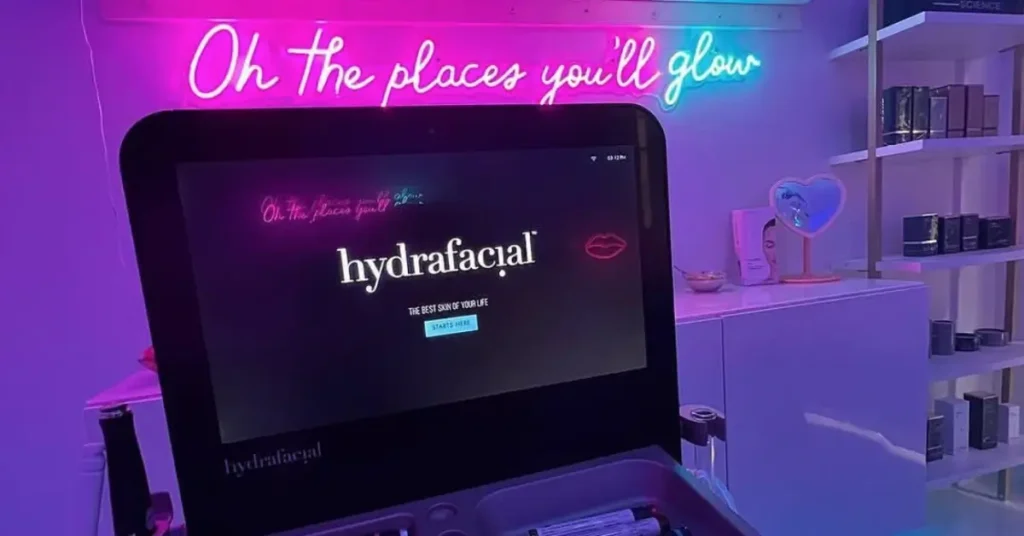
As someone who has experienced hydrafacial side effects, I know how frustrating it can be to deal with irritated skin and redness after a facial treatment. While hydrafacial can be effective for some people, it may not be the best option for everyone. Luckily, there are alternatives to hydrafacial that can provide similar benefits without the potential side effects.
One alternative to hydrafacial is microdermabrasion. This treatment uses a special device to exfoliate the skin and remove dead skin cells, which can help improve the appearance of fine lines, wrinkles, and hyperpigmentation. Microdermabrasion is generally considered safe and has few side effects, although some people may experience mild redness or irritation after the treatment.
Another option is a chemical peel. This treatment uses a combination of acids to remove the outer layer of skin and stimulate collagen production, which can help improve the appearance of fine lines, wrinkles, and acne scars.
Chemical peels can be customized to your skin type and concerns, and can be done in a variety of strengths, from mild to deep. However, chemical peels can be more invasive than hydrafacial and may require downtime for healing.
If you’re looking for a more natural alternative to hydrafacial, try incorporating a facial massage into your skincare routine. Facial massage can help improve circulation, promote lymphatic drainage, and reduce puffiness and inflammation. You can use your hands or a facial roller to gently massage your face, focusing on areas that need extra attention, such as the jawline and under the eyes.
Remember: Before trying any new skincare treatment, be sure to consult with a licensed esthetician or dermatologist to determine the best option for your skin type and concerns.
HydraFacial Side Effects: Key Takeaways
As someone who has experienced the HydraFacial treatment, I can attest to its many benefits. However, like any cosmetic procedure, there are some potential side effects to be aware of. Here are the key takeaways regarding HydraFacial side effects:
- The most common side effect is some redness and sensitivity immediately following the treatment. This typically subsides within a few hours to a day.
- Some patients may experience breakouts in the days following the treatment, as the skin purges impurities. This is a normal and temporary reaction.
- In rare cases, patients may experience more severe side effects such as blistering, scabbing, or hyperpigmentation. These are typically the result of improper technique or aftercare, and can be avoided by choosing a reputable provider and following their instructions carefully.
It’s worth noting that the vast majority of HydraFacial patients experience little to no side effects, and the treatment is generally considered safe and effective. However, it’s important to be aware of the potential risks and to choose a provider who is experienced and knowledgeable in administering the treatment.
In my experience, the benefits of HydraFacial far outweigh any potential side effects. The treatment leaves my skin looking brighter, smoother, and more hydrated, and I always feel like I’m glowing for days afterwards. As long as you choose a reputable provider and follow their instructions for aftercare, you can enjoy the many benefits of HydraFacial with minimal risk of side effects.
FAQ
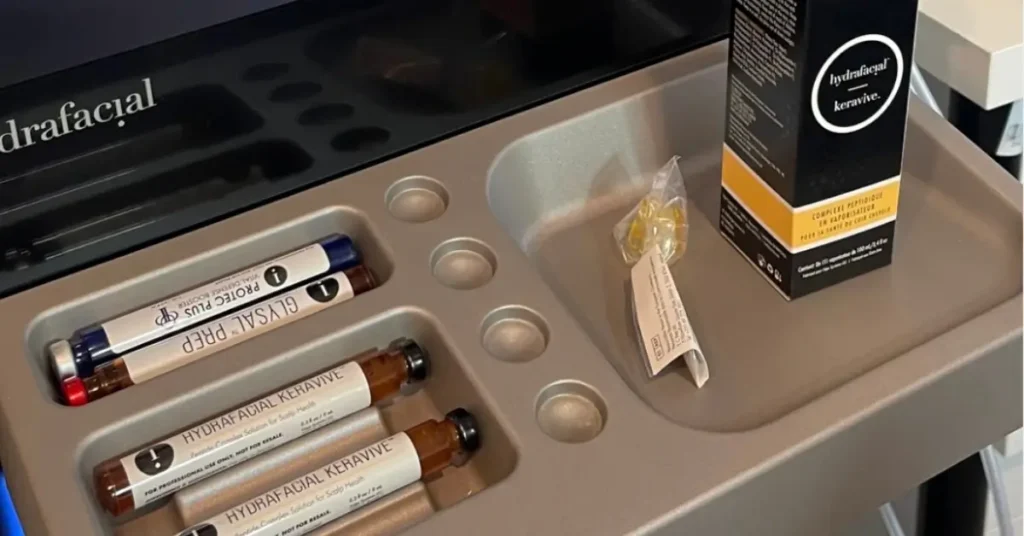
Is there a downside to HydraFacial?
One downside of HydraFacial is its cost, as it’s typically more expensive than some other facials. Additionally, results may require ongoing treatments for maintenance, which can add up over time.
What can go wrong with a HydraFacial?
While rare, potential issues with a HydraFacial include skin irritation, redness, or an adverse reaction to the serums used. It’s essential to choose a skilled provider to minimize these risks and ensure a safe and effective treatment.
What happens to your face after a HydraFacial?
After a HydraFacial, your face will likely feel refreshed and look radiant. It’s common to experience improved skin texture, reduced fine lines, and enhanced hydration. Results are often immediate and continue to improve in the days following the treatment.
Do Hydrafacials actually help?
Yes, Hydrafacials are highly effective. They deeply cleanse, exfoliate, and hydrate the skin, leading to improved texture, tone, and radiance. The visible results and overall skin health benefits make them a popular and worthwhile treatment option.
What to avoid after a HydraFacial?
After a HydraFacial, avoid sun exposure without sunscreen, rigorous workouts, hot showers, and harsh skincare products for 24-48 hours. Let your skin enjoy the post-treatment glow without unnecessary irritation or stress.
If you liked this blog article about the topic: HydraFacial Side Effects: What No One Tells You, don’t forget to leave us a comment down below to tell us about your experience with it.

